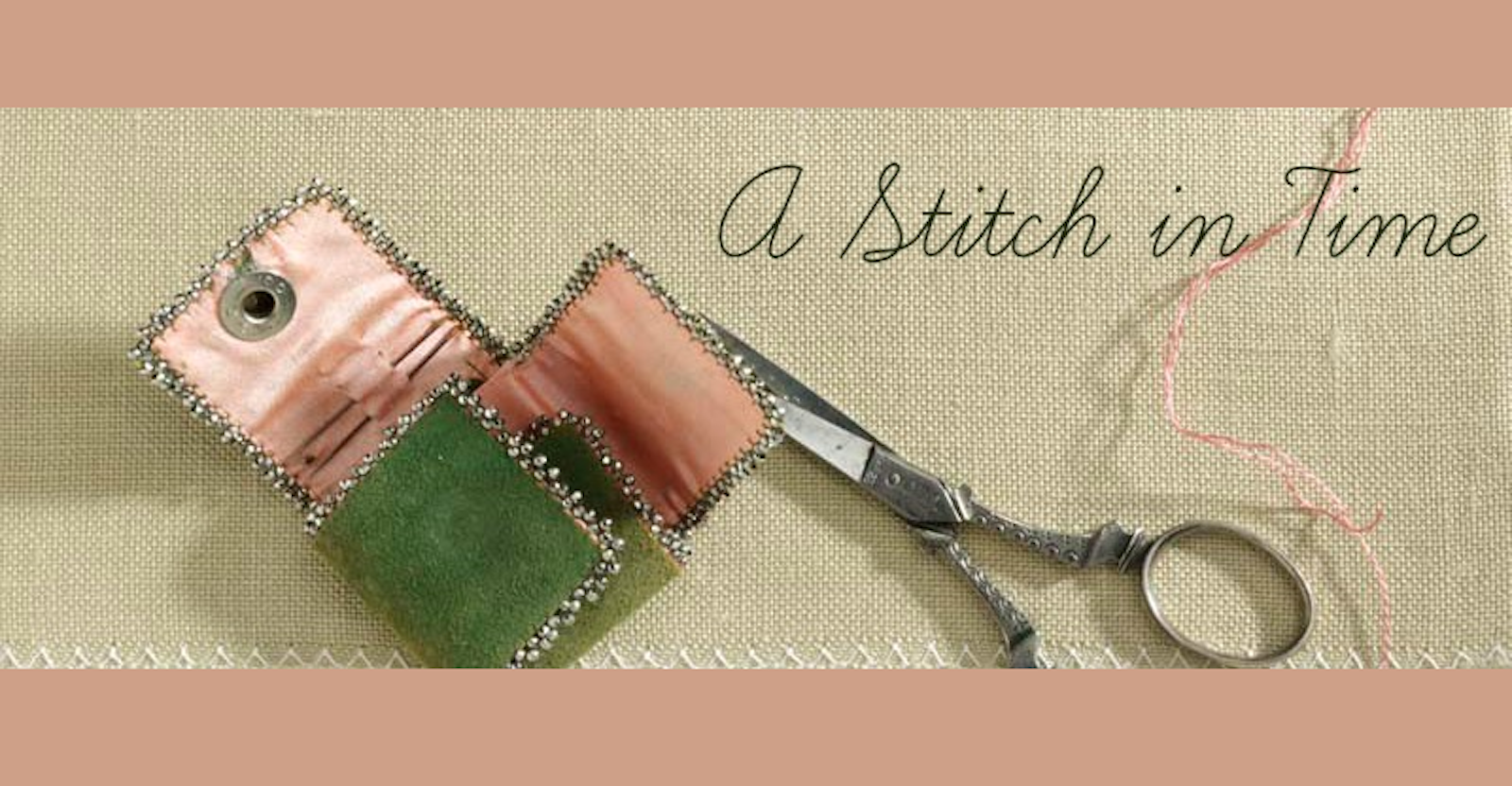One of the oldest surface-embroidery stitches, the coral stitch is a versatile and widely used member of the popular knotted-stitch family with the French knot being the most famous. The coral stitch is also known as the coral knot, German knot, knotted, knotted outline, snail trail, and beaded stitch. (Occasionally it has also been referred to as the scroll stitch, but this latter appellation refers to an entirely different but similar looking stitch.) In this family, the stitching thread produces a knot on the surface of evenweave or plain ground fabric.
The coral stitch resembles a series of small knots or beads connected by a line of thread of varying lengths. It is an old stitch found on antique Chinese embroideries, 18th-century American crewelwork, Spanish blackwork, Irish Mountmellick whitework, various Italian embroideries, German Schwalm whitework, 17th-century English Jacobean woolwork, and Danish Hedebo, as well as drawn-thread work, pulled-thread work, and crazy quilting. This stitch got around! A more probable explanation is that the coral stitch was created independently in several areas of the world and then migrated.
The final appearance of this stitch is dependent upon the weight and fiber composition of the thread used. Cotton, rayon, or silk floss, cutwork thread, pearl cotton of differing weights, silk ribbon, floche, crochet threads, and even some yarns have been used. The more tightly twisted the thread is, the more distinctive the knot is. Overdyed threads produce dynamic effects.
The coral stitch forms textured straight or curved lines, outlines, veining, or fillings. Traditionally, this stitch is worked from right to left, but it can be stitched in the reverse direction, which is especially helpful for left-handers. To work this stitch vertically, simply turn the fabric ninety degrees and stitch right to left again. The knots are usually spaced at short, even intervals apart, about ⅛ inch (3 mm), but they can be arranged closer, farther apart, or even at varying distances. For tight curves, the knots are stitched closer together. If the knots are very close together, then the stitch is referred to as the knotted outline stitch. For the small stitch into the fabric, the needle can either be placed straight (Figure 1) or slanted (Figure 2) which results in slightly different looking knots. The Coral stitch needs a little practice to maintain knots of consistent size and shape. Personally, I find that I produce the best-shaped knots when I hold the thread parallel to the fabric surface, stitch through the fabric, and then bring the needle and thread up perpendicular to fabric while carefully tightening the knot.
The only additional named variations that I could find mentioned were the zigzag-coral stitch (Figure 3), where the knots alternate between parallel upper and lower lines of various widths, but the thread is always carried at a sharp angle between these lines, and the corded-coral stitch (Figure 4), a line of coral stitches basically couching down an additional thread, which can be the same thread used for the coral stitches themselves or one of a different color, weight, or fiber. For the zigzag-coral stitch, the needle should always be inserted into the fabric from the outside of the line inward (Figure 3).
To use this stitch as a filling, the knots can be lined up in even rows for a ridged appearance or dovetailed for an overall bumpy look. These lines can be arranged very close together or with space between them.
After spending the time and care creating perfectly shaped knots, don't flatten them during and after stitching. Never place a hoop or stitching frame over these stitches, and always place the embroidery face down on a thick terry towel when pressing.
—Deanna Hall West
Deanna Hall West is PieceWork’s needlework technical editor; she previously was the editor of The Needleworker magazine. Stay tuned for more stitch tutorials from Deanna in the months ahead!
Enjoy learning more about embroidery stiches in our blog series “A Stitch in Time.”
Featured Image: Scissors and needle case courtesy of Loene McIntyre. Photo by Joe Coca. Illustrations by Ann Swanson.





